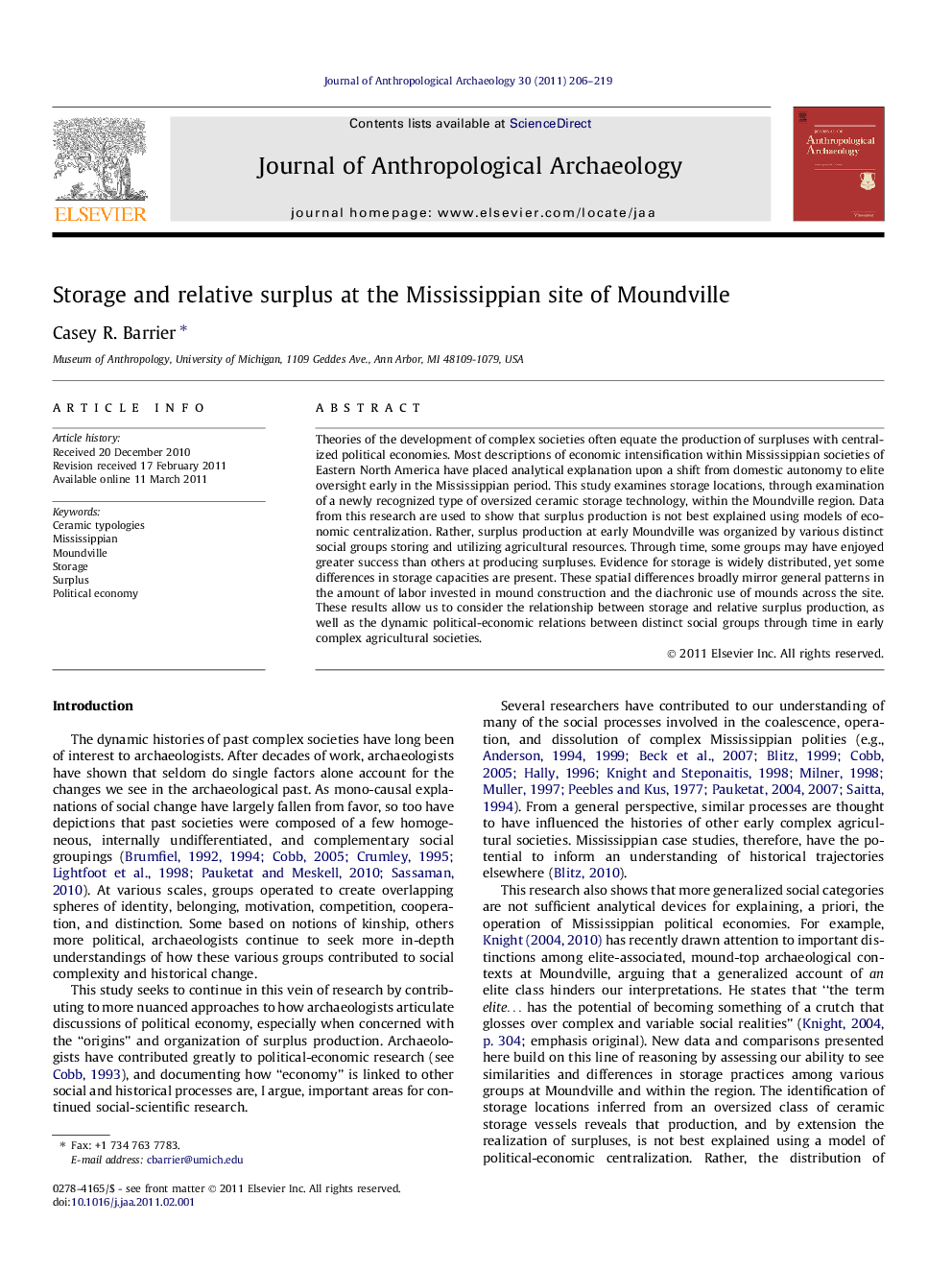| Article ID | Journal | Published Year | Pages | File Type |
|---|---|---|---|---|
| 1035070 | Journal of Anthropological Archaeology | 2011 | 14 Pages |
Theories of the development of complex societies often equate the production of surpluses with centralized political economies. Most descriptions of economic intensification within Mississippian societies of Eastern North America have placed analytical explanation upon a shift from domestic autonomy to elite oversight early in the Mississippian period. This study examines storage locations, through examination of a newly recognized type of oversized ceramic storage technology, within the Moundville region. Data from this research are used to show that surplus production is not best explained using models of economic centralization. Rather, surplus production at early Moundville was organized by various distinct social groups storing and utilizing agricultural resources. Through time, some groups may have enjoyed greater success than others at producing surpluses. Evidence for storage is widely distributed, yet some differences in storage capacities are present. These spatial differences broadly mirror general patterns in the amount of labor invested in mound construction and the diachronic use of mounds across the site. These results allow us to consider the relationship between storage and relative surplus production, as well as the dynamic political-economic relations between distinct social groups through time in early complex agricultural societies.
Graphical abstractBox plots displaying rim diameter distributions of normal jars and oversized jars from Mound W, Moundville.Figure optionsDownload full-size imageDownload high-quality image (22 K)Download as PowerPoint slideResearch highlights► Vessel size data show the presence of a typologically distinct class of storage pot. ► Comparisons show that several distinct domestic groups stored resources. ► Through time, some groups were able to produce greater relative surpluses. ► Initial surpluses resulted from domestic production; later funded new institutions. ► Results inform general theories on dynamics of early complex agricultural societies.
